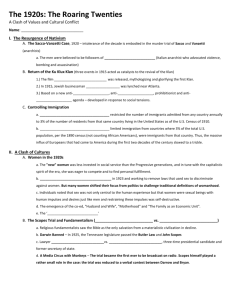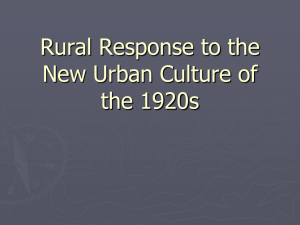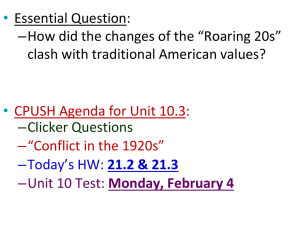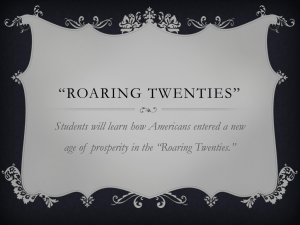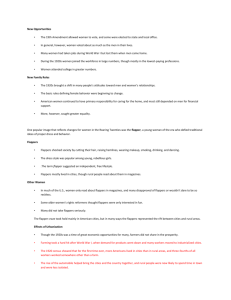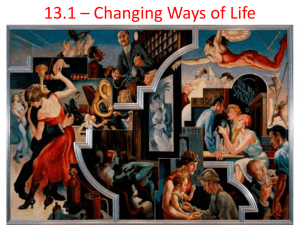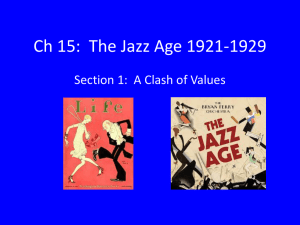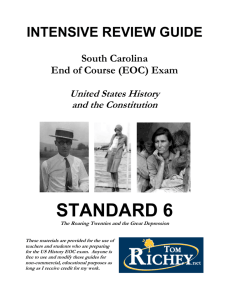File
advertisement
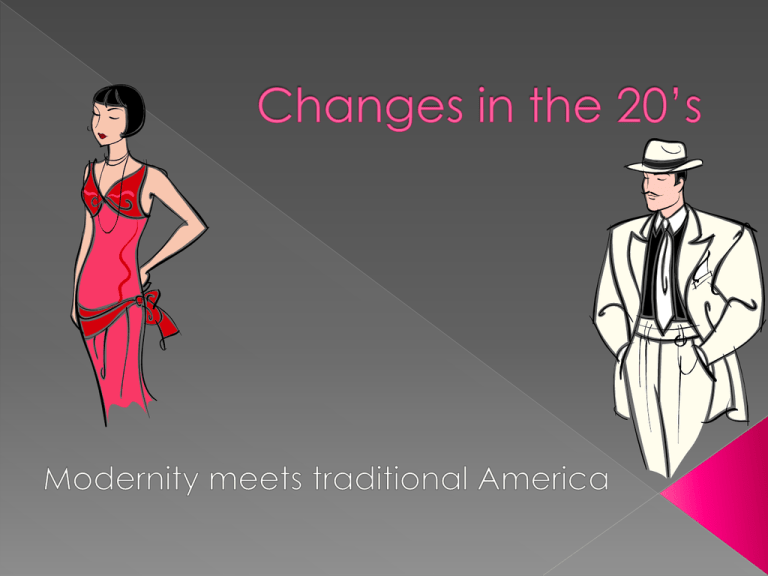
• Compare economic and cultural life in rural America to that in urban America. • Discuss changes in U.S. immigration policy in the 1920s. • Analyze the goals and motives of the Ku Klux Klan in the 1920s. • Discuss the successes and failures of the Eighteenth Amendment. • modernism – trend that emphasized science and secular values over traditional religious ideas • fundamentalism – belief that emphasizes the Bible as literal truth • Scopes Trial – 1925 “Monkey Trial,” which challenged a law against teaching Darwin’s theory of evolution in Tennessee public schools • Volstead Act – a law that gave the government power to enforce the Eighteenth Amendment • quota system – a formula to determine how many immigrants could enter the U.S. annually from a given country • Ku Klux Klan – a group violently opposed to immigrants, Catholics, Jews, and African Americans • Prohibition – a ban on alcohol • Eighteenth Amendment – a 1919 Constitutional amendment that established Prohibition bootlegger – someone who illegally sold alcohol during Prohibition 1) In the 1920s, many city dwellers enjoyed a rising standard of living, while most farmers suffered through hard times. 2) Conflicting visions for the nation’s future heightened tensions between cities and rural areas. In 1920, for the first time, more Americans lived in cities than in rural areas. In cities, many people enjoyed prosperity and were open to social change and new ideas. Times were harder in rural areas. Rural people generally preferred traditional views of science, religion, and culture. Modernism emphasized science and secular values. Fundamentalism emphasized religious values and taught the literal truth of the Christian Bible. Attitudes toward education illustrate another difference between urban and rural perspectives. • Urban people saw formal education as essential to getting a good job. • In rural areas, “book learning” interfered with farm work and was less highly valued. Education became a battleground for fundamentalist and modernist values in the 1925 Scopes Trial. • Tennessee made it illegal to teach evolution in public schools. • Biology teacher John Scopes challenged the law. • Defense attorney Clarence Darrow tried to use science to cast doubt on religious beliefs. The Scopes Trial illustrated a major cultural and religious division, but it did not resolve the issue. • Scopes was found guilty of teaching evolution and fined. • The conflict over teaching evolution in public schools continues today. Many Americans recognized the importance of immigration to U.S. history. Many Mexicans settled in the sparsely populated areas of the southwest. Nativists feared that immigrants took jobs away from native-born workers and threatened American traditions. After World War I, the Red Scare increased distrust of immigrants. In 1924, the National Origins Act set up a quota system for immigrants. For each nationality, the quota allowed up to 2% of 1890’s total population of that nationality living in the U.S. Trends such as urbanization, modernism, and increasing diversity made some people lash out against change. • Beginning in 1915, there was a resurgence of the Ku Klux Klan. • The Klan promoted hatred of African Americans, Jews, Catholics, and immigrants. • By 1925, the Klan had between 4 and 5 million members. • Many valued the idea of the United States as a “melting pot.” By the late 1920s, many Klan leaders had been exposed as corrupt. In 1919, the Eighteenth Amendment, which banned the making, distributing, or selling of alcohol, became part of the Constitution. The Volstead Act enabled the government to enforce the amendment. Prohibition became law in the United States. “Drys” favored Prohibition, hailing the law as a “noble experiment.” Drys believed that Prohibition was good for society. “Wets” opposed Prohibition, claiming that it did not stop drinking. Wets argued that Prohibition encouraged hypocrisy and illegal activity.
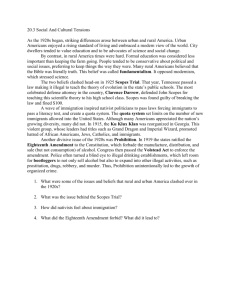
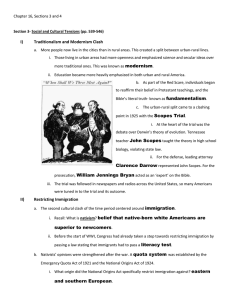
![Changes%20in%20American%20Society[1] - pams](http://s3.studylib.net/store/data/009097112_1-9a8e74b6b539401fd3776a36445a3f2f-300x300.png)
